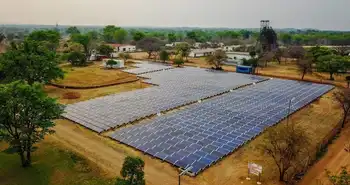China's power consumption declines in 2008
Starting in June 2008, however, the nation's power consumption began falling, and in October 2008, the country showed its first negative growth since 1999, reaching an 8.1% year-on-year drop in November 2008, according to the National Development and Reform Commission's annual report issued on February 25, 2009.
Regarding the basic operation indicators, the nation's generation output reached 3.43 trillion kilowatt-hours (kWh), an increase of 5.2% year over year, representing a decline in power-generation growth of 9.4 percentage points. Hydropower reached 563.3 billion kWh, up 19.50%. Thermal power reached 2.78 trillion kWh, up 2.17%. The average of the accumulated utilization-hours of power generation equipment was 4,677 hours, a drop of 337 hours year-on-year. Of this, that of thermal power equipment reached 4,911 hours, a drop of 427 hours year-on-year.
Overall social power consumption reached 3.42 trillion kWh, an increase of 5.2% year over year, which was 9.6 percentage points lower than the previous year. Power consumption in the first (agriculture), second (mining, manufacturing, power production, construction), and third (services, insurance, hotels) industries rose 1.9%, 3.8%, and 9.7%, respectively, while household power consumption rose 1.8%. Within these different sectors, consumption of power in the production of nonferrous metals, metallurgy, power, textiles, transportation, and electric and electronic manufacturing dropped more than the national average level.
Regarding operation performance, from January to November 2008, the total assets in the thermal power sector reached $295.39 billion; total debts were $219.80 billion.
• Main business costs reached $113.37 billion, up 29.1% year over year.
• Total interest expenditure reached $7.94 billion, up 41.7%.
• Total profit was negative $5.72 billion, a increased loss of $14.54 billion.
The total assets in the power-supply sector reached $351.01 billion; total debts were $194.93 billion.
• Main business costs reached $219.43 billion, up 15.3% year over year.
• Total interest expenditure reached $4.19 billion, up 34.6%.
• Total profit was $4.16 billion, $5.55 billion less year over year.
Regarding the energy conservation and emission reduction in 2008, the average coal consumption in power supply reached 349 grams per kWh, a drop of 7 grams per kWh year-on-year; the national line-loss rate reached 6.64%, a drop of 0.33 percentage point year-on-year. In total, 16.69 gigawatts of inefficient small thermal power units were shut down.
Regarding the operation of the power industry in 2009, supply will exceed demand, although local power shortages might occur in the dry season or peak hours in the summer.
Related News

Restoring power to Florida will take 'weeks, not days' in some areas
MIAMI - Parts of Florida could be without electricity for more than a week, as damage from Hurricane Irma will require a complete rebuild of portions of the electricity grid, utility executives said on Monday.
Irma has knocked out power to 6.5 million Florida electricity customers, or nearly two-thirds of the state, since making landfall this weekend. In major areas such as Miami-Dade, 74 percent of the county was without power, according to Florida's division of emergency management.
Getting that power back online may require the help of 50,000 to 60,000 workers from all over the United States and Canada, according to Southern Company CEO and Chairman…




